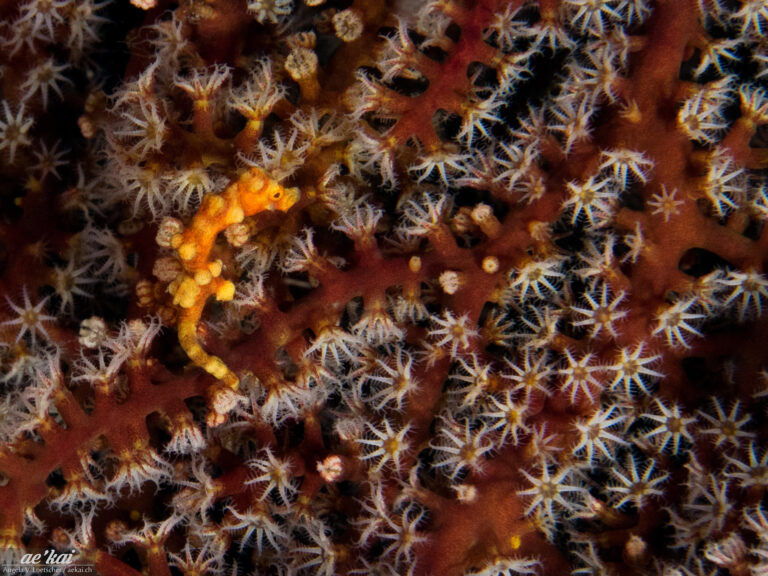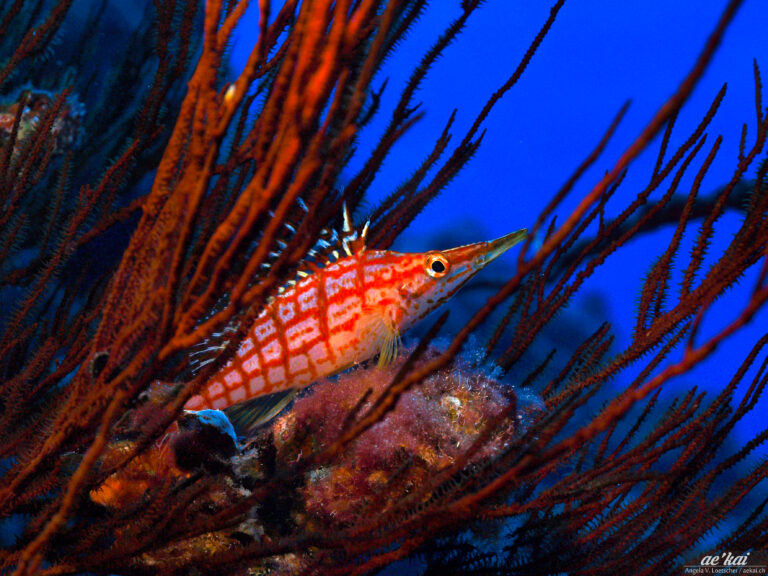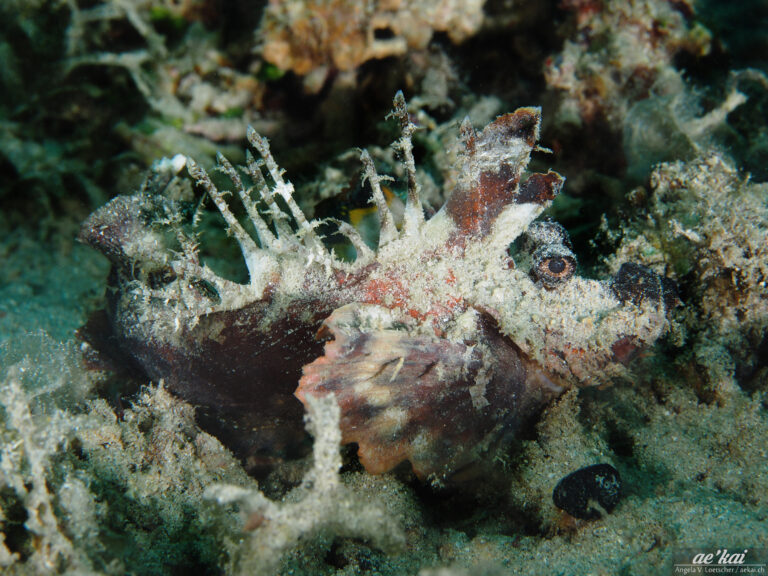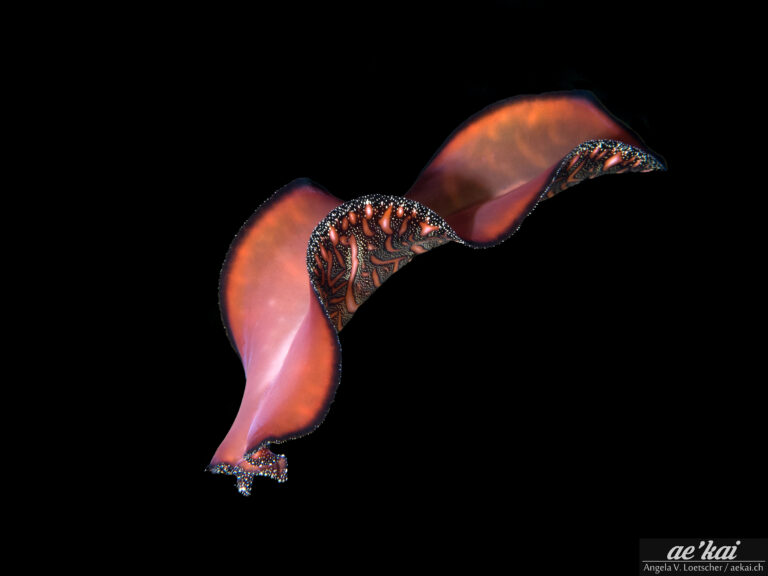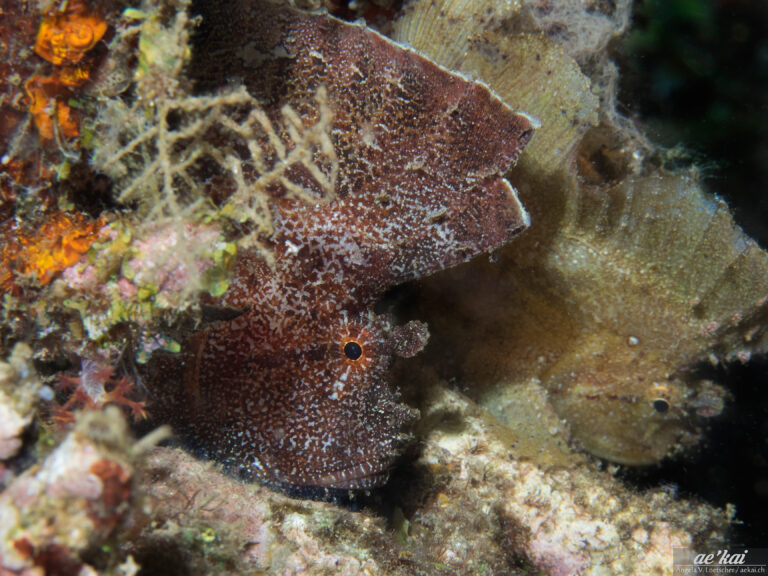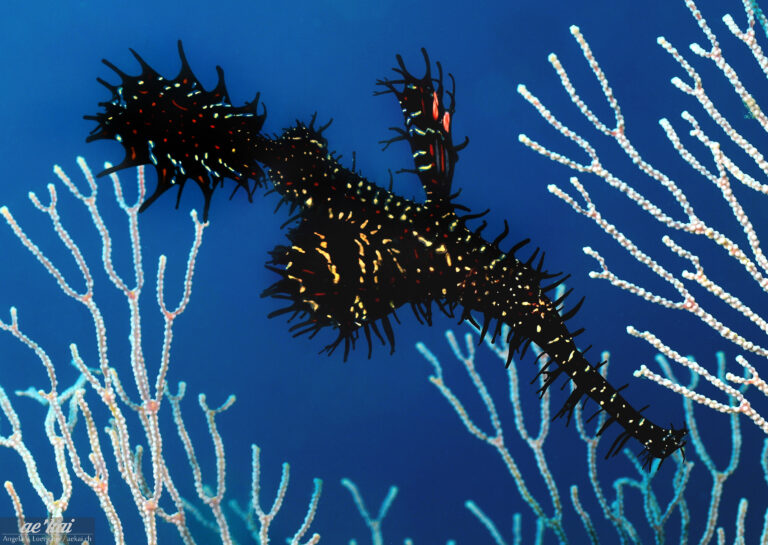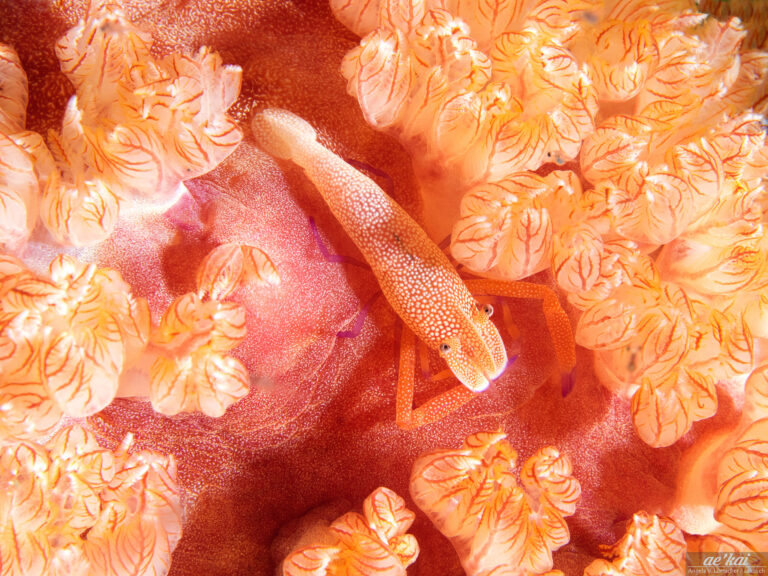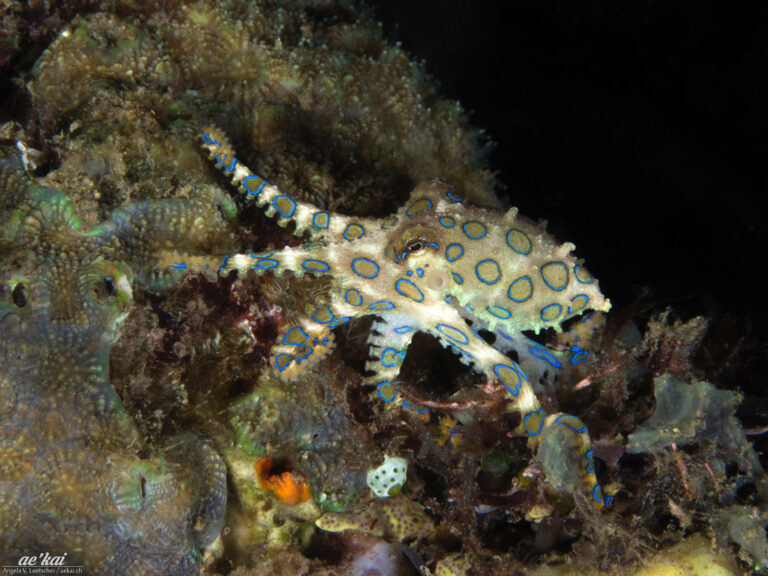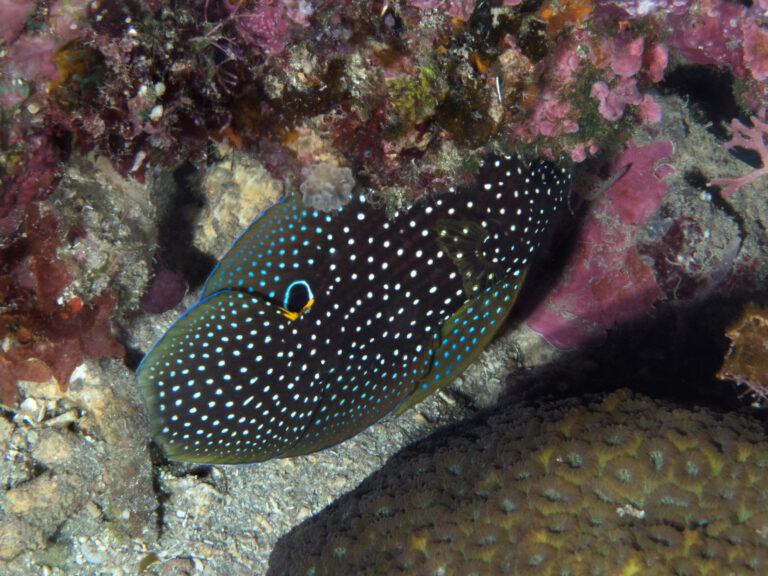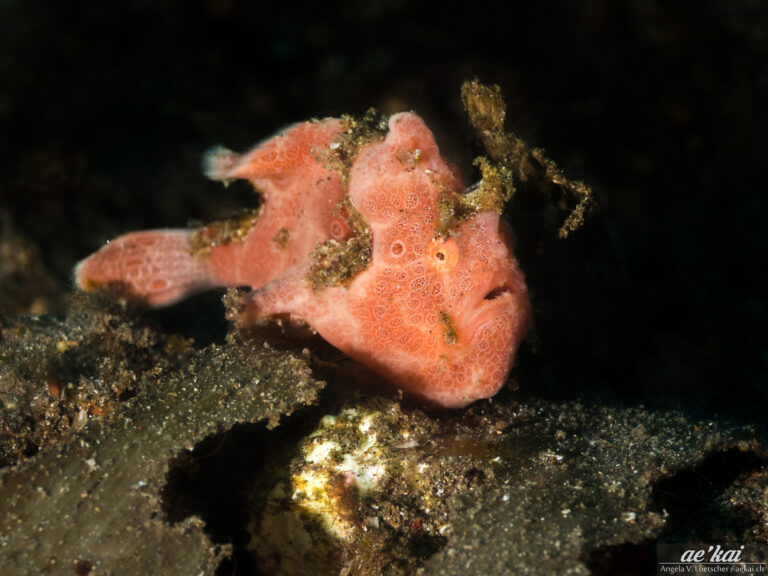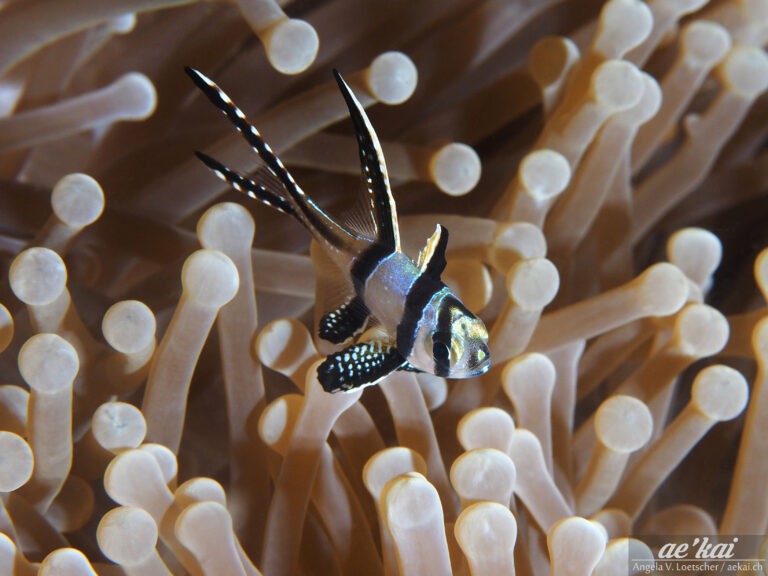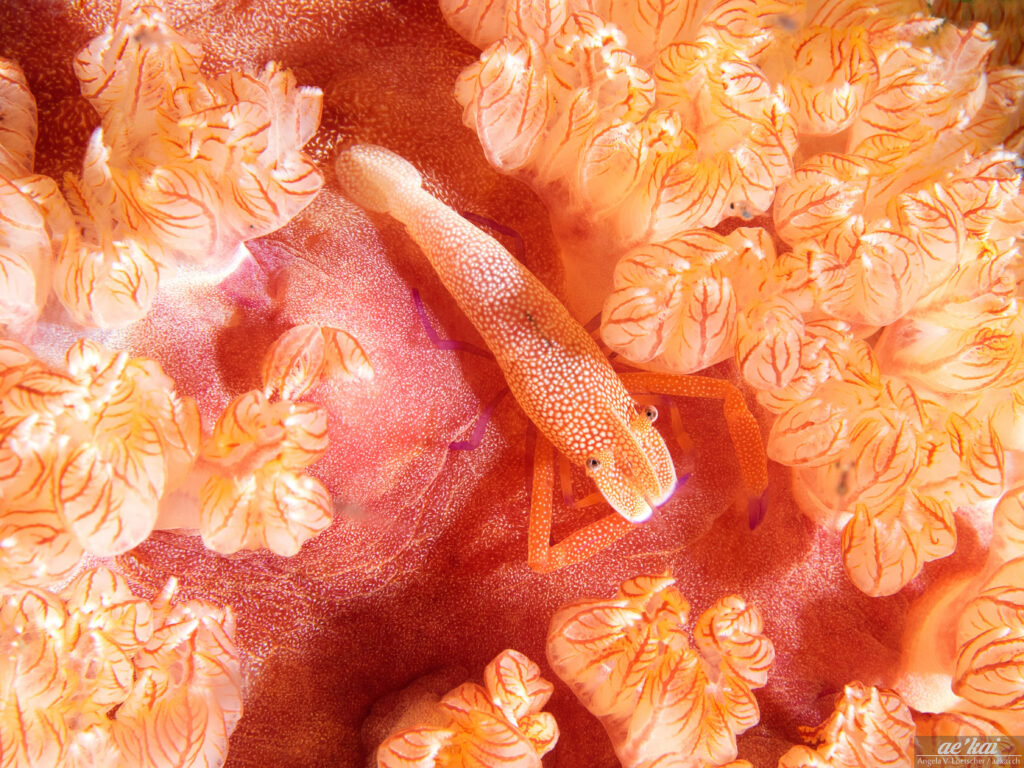
EN: Emperor Shrimp
DE: Imperator-Garnele
Family
Commensal Shrimps
(Palaemonidae)
Size
max. 2 cm
Diet
Omnivore
Distribution
Indo-Pacific
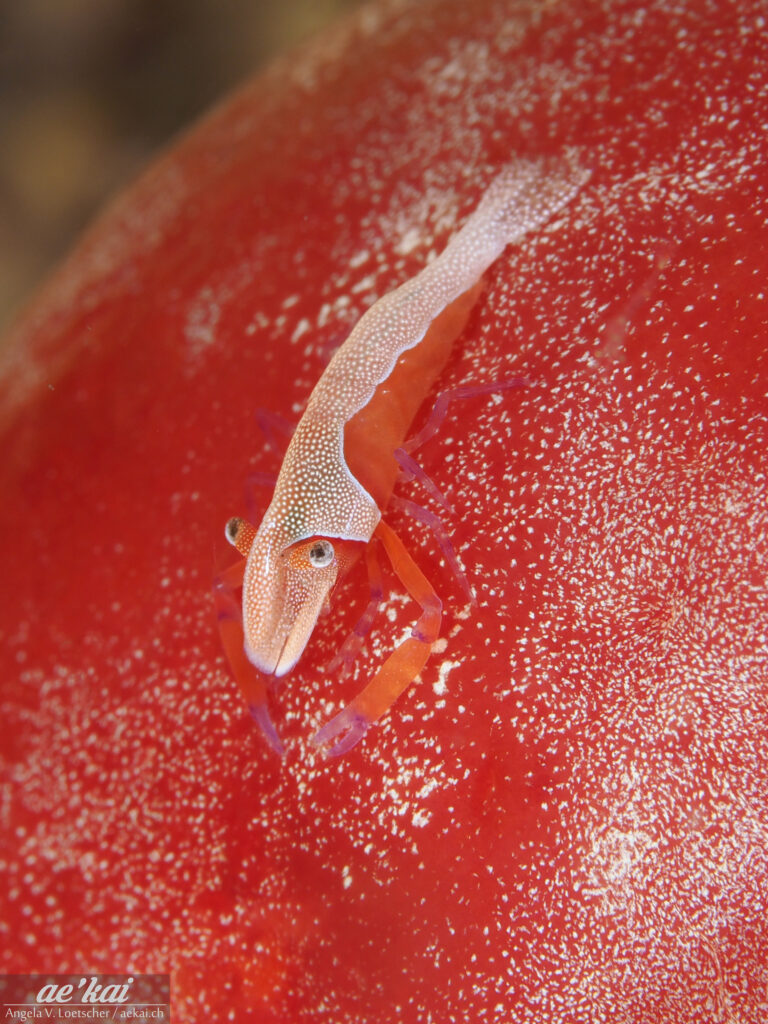
The Emperor Shrimp can be found on a wide range of invertebrate hosts such as slugs (Spanish dancer or of the species Ceratosoma), sea cucumbers (Thelenota sp., Synapta sp. or Stichopus sp.) or the Flamboyant Cuttlefish (Metasepia pfefferi).
The Emperor Shrimp is widely distributed in the Indo-Pacific and can live in any environment as long as its hosts are present. Typically, the environment is shallower waters and sandy or rocky bottoms with plenty of light and without strong waves or currents, in depths of 5-30 m.
Color and pattern are very remarkable and can even be adjusted to fit the host a bit better, so the shrimp is better camouflaged against predators. Their body is orange-red. White dots may cover the whole body (for shrimp living on Spanish dancers), be concentrated in one spot or even be missing completely.
The legs, scissors and the joints of the arms are colored violet. The shrimp that Z. imperator most closely resembles is the Starfish Shrimp (Zenopontonia soror). Emperor Shrimp can reach up to 2 cm in length.
Behavior (Commensalism)
Commensalism as a term derives from the word “table companion” and biologically means a kind of partnership or interaction between two species, where only one benefits but the other is not harmed. If one species is harmed in favor of the other, this is called parasitism, while in the case of mutual benefit, it is called mutualism. All these – commensalism, mutualism and parasitism – are forms of symbiosis.
The commensalism itself mainly consists of the shrimp riding on the back of its host and thus benefiting from protection. The interaction has not been fully researched, so assumptions are made based on observed behavior.
It is assumed that the shrimp are able to obtain food more easily through the interaction, for example through material that is stirred up by the movement of the host, or that they can even extract food from the host’s faeces
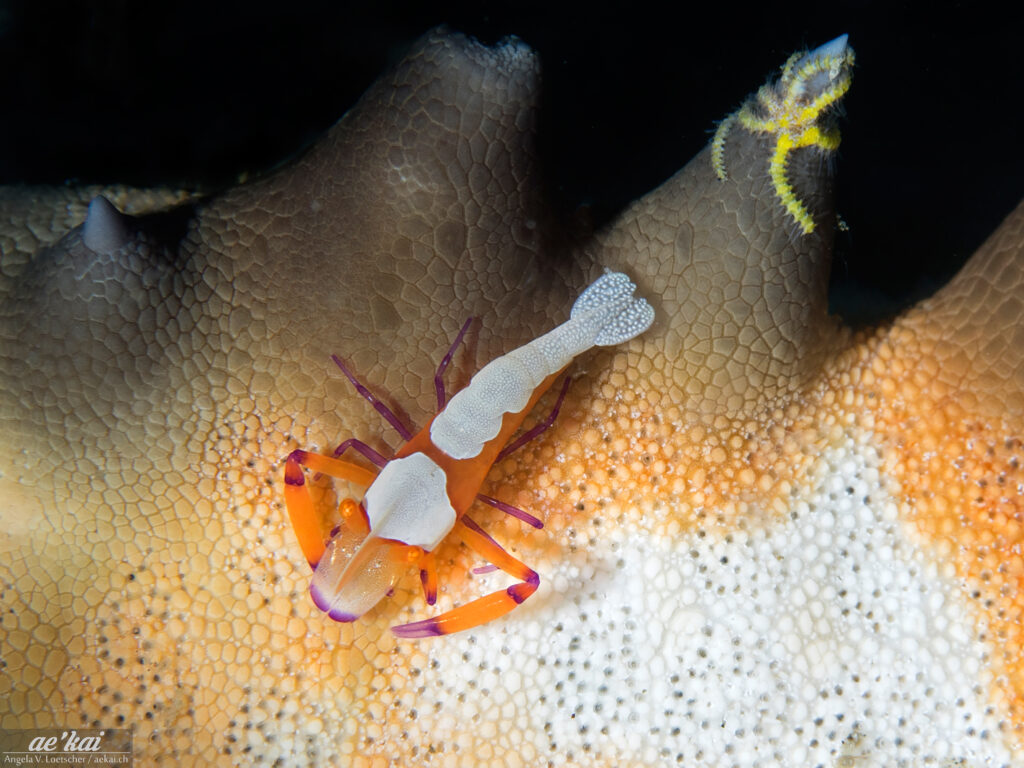
Zenopontonia rex on a sea star
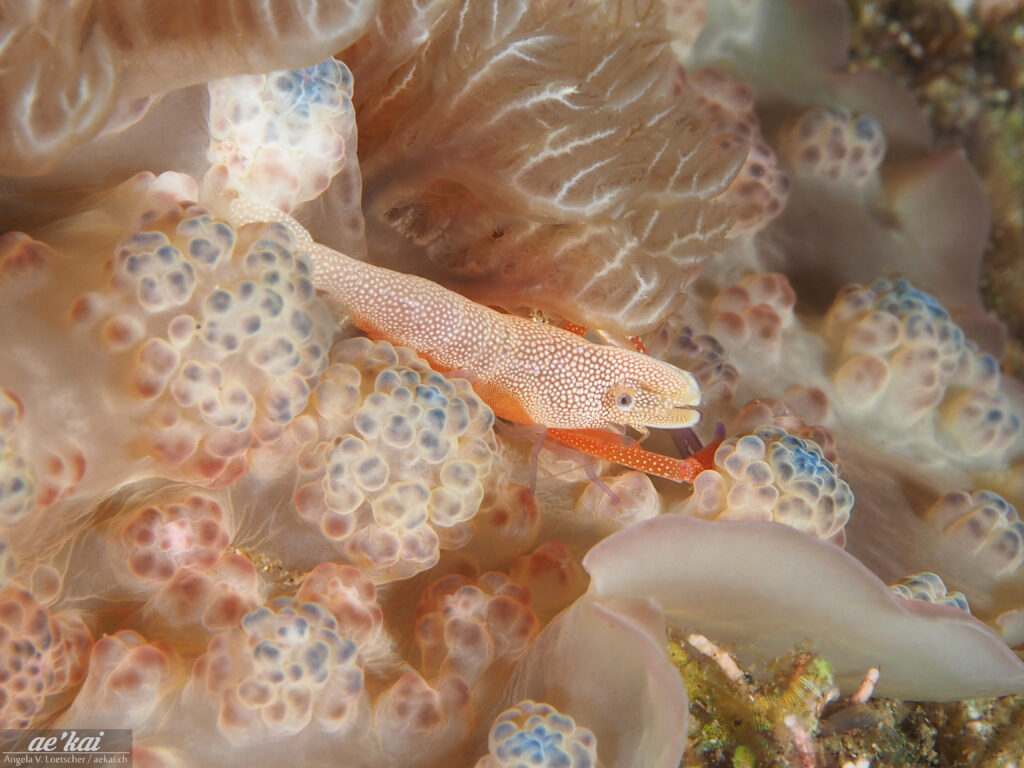
Zenopontonia rex on a nudibranch (sea slug) of the species Dendrodoris tuberculosa
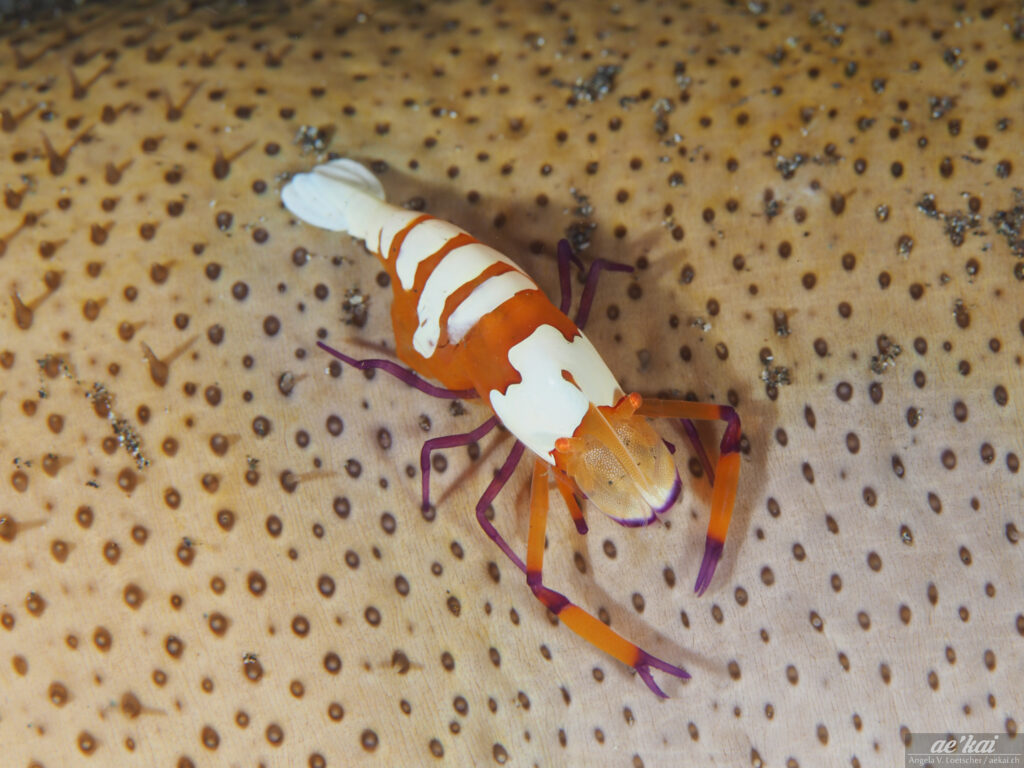
Zenopontonia rex on a sea cucumber
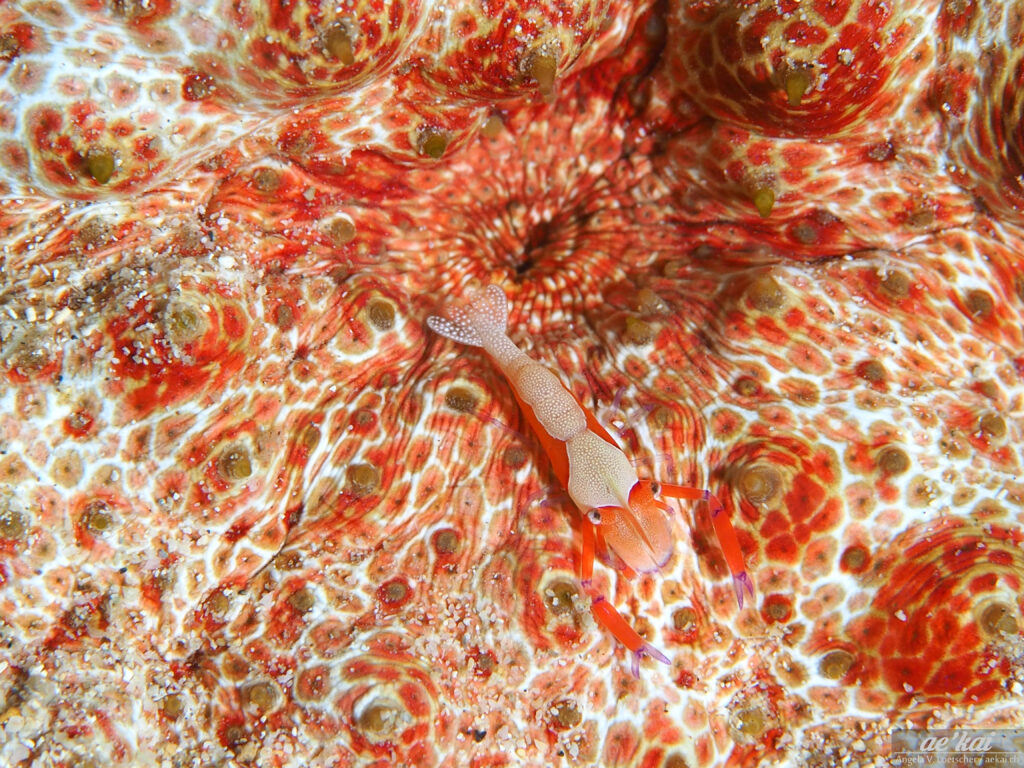
Zenopontonia rex ona sea cucumber. The opening on the upper right of the shrimp is the anus of the sea cucumber

